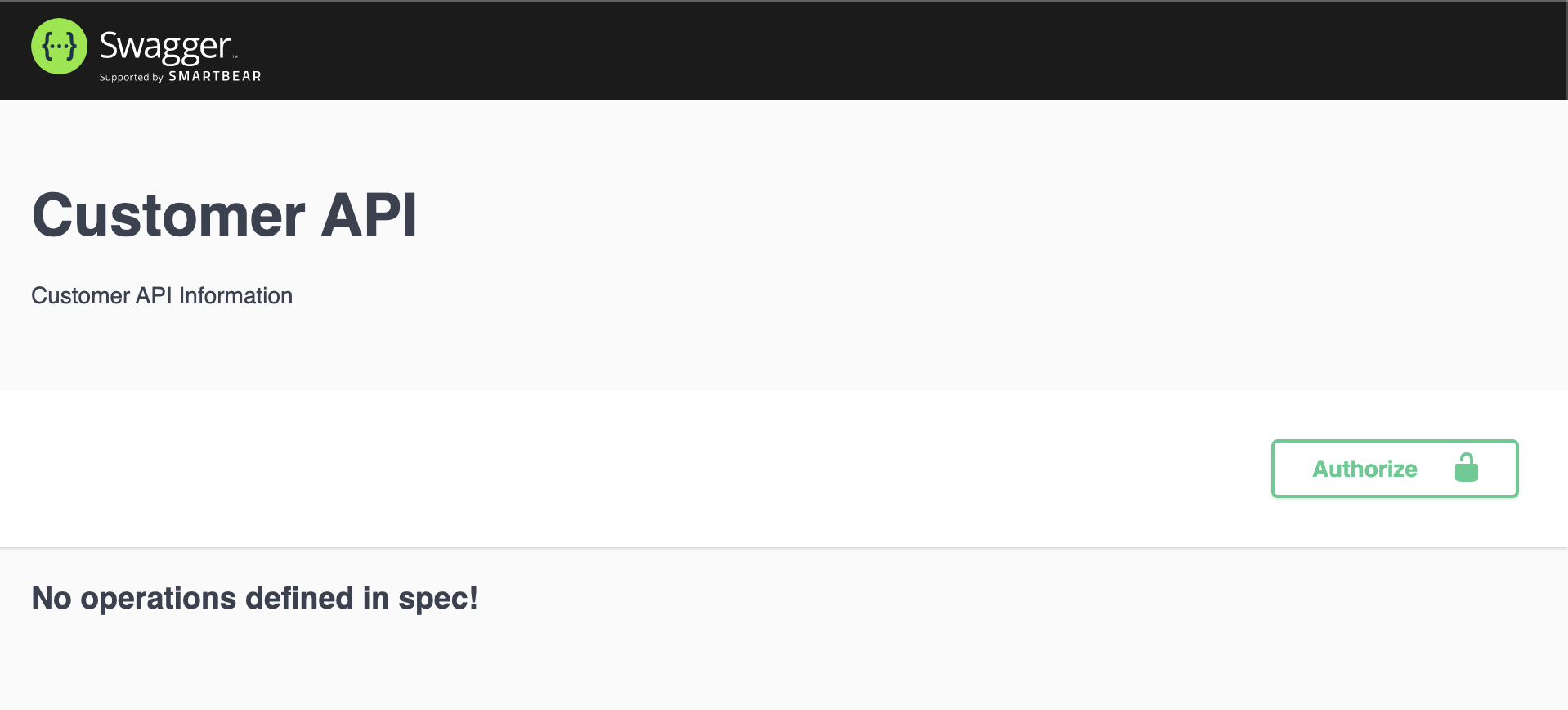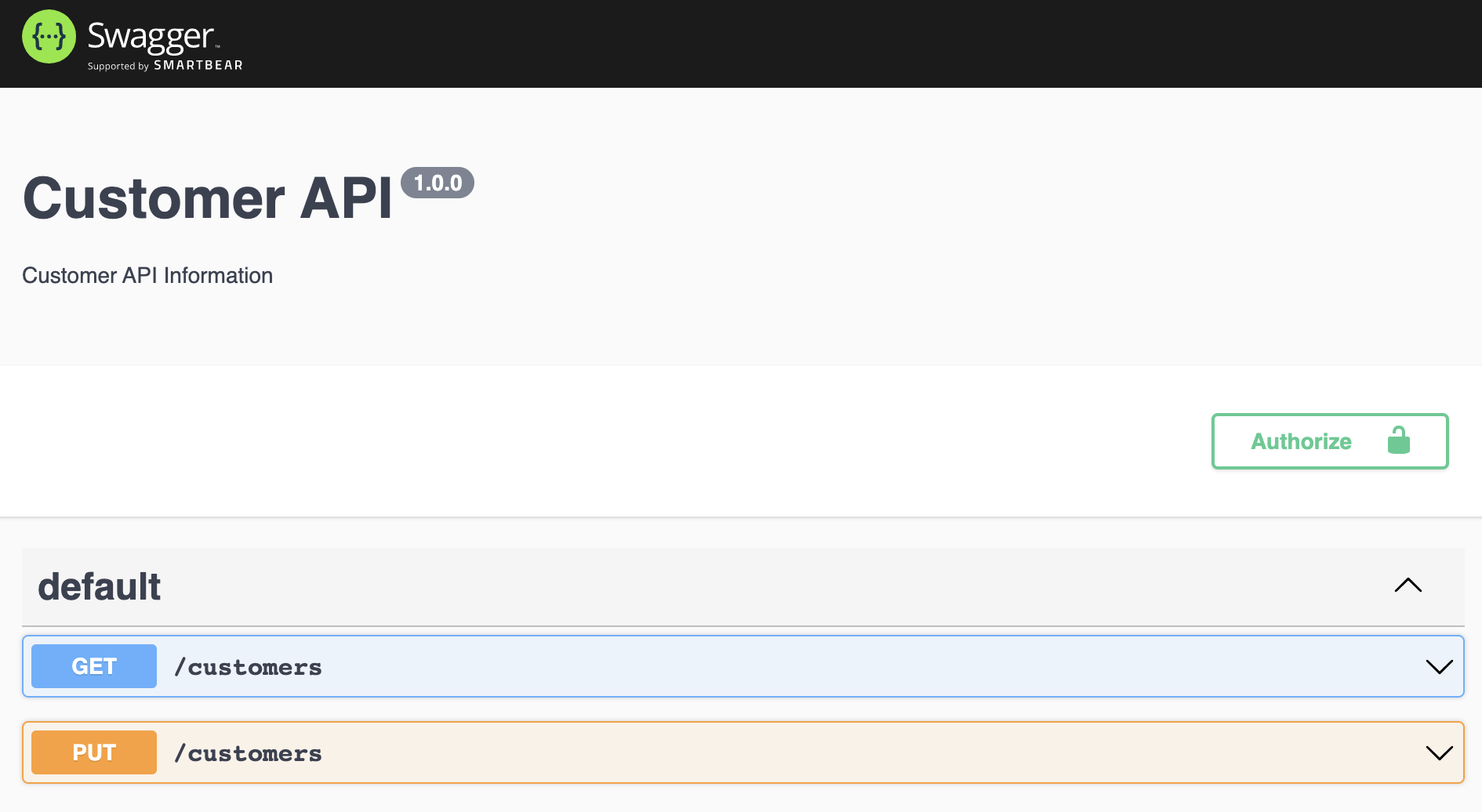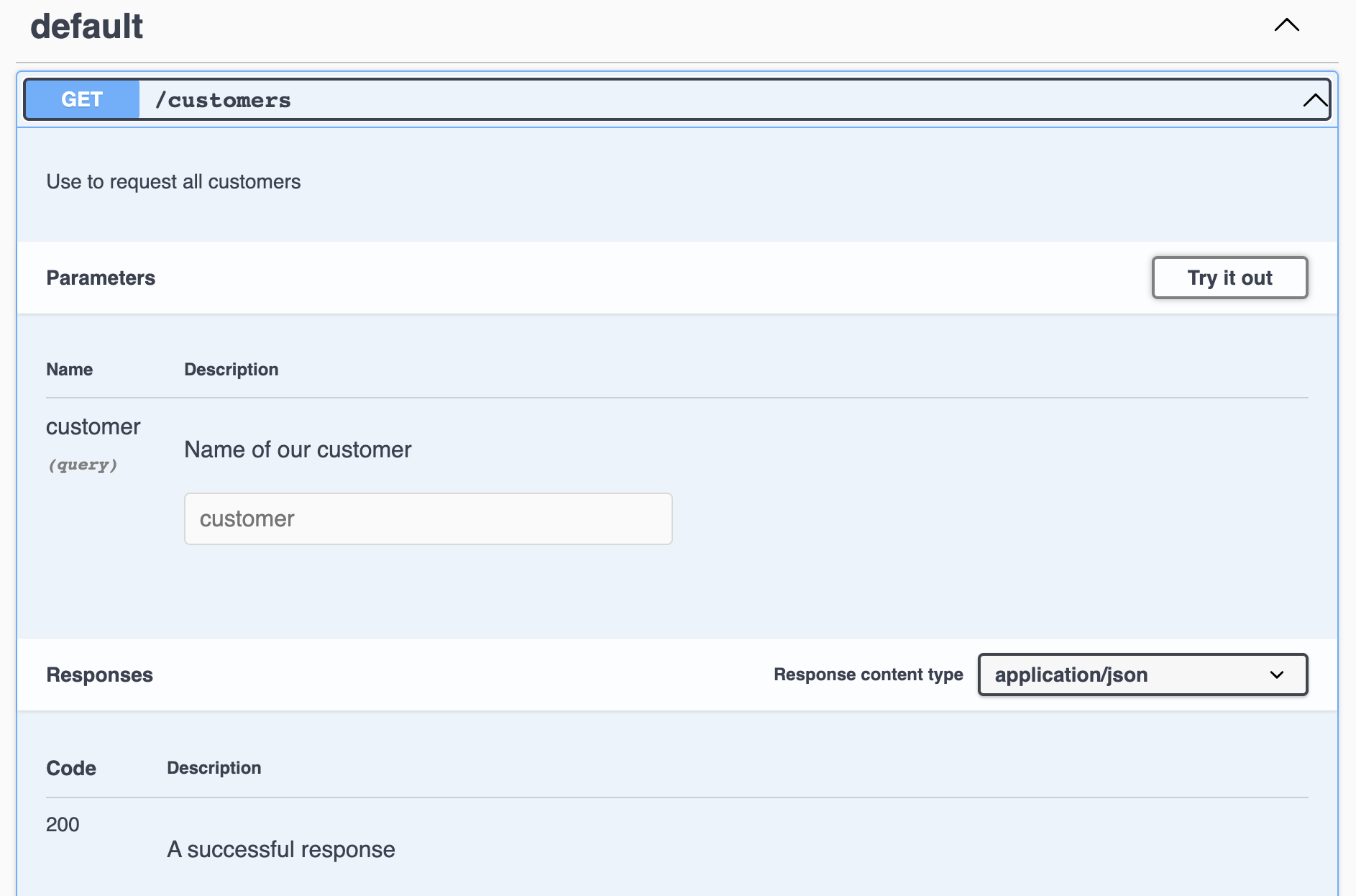Add Swagger to Express
Default express app
npm i express
const express = require("express");
const app = express();
const port = process.env.PORT || 5000;
// Routes
app.get("/customers", (req, res) => {
res.status(200).send("Customer results");
});
app.put("/customer", (req, res) => {
res.status(200).send("Successfully updated customer");
});
app.listen(port, () => {
console.log(`Server is running on port ${port}`);
});
Setup basic Swagger options
npm i swagger-ui-express swagger-jsdoc
const express = require("express");
const app = express();
const swaggerJsDoc = require("swagger-jsdoc");
const swaggerUi = require("swagger-ui-express");
const port = process.env.PORT || 5000;
// for more info: https://swagger.io/specification/#infoObject
const swaggerOptions = {
swaggerDefinition: {
info: {
title: "Customer API",
description: "Customer API Information",
contact: {
name: "Amazing Developer",
},
servers: ["http://localhost:5000"],
},
},
// ['.routes/*.js']
apis: ["app.js"],
};
const swaggerDocs = swaggerJsDoc(swaggerOptions);
app.use("/api-docs", swaggerUi.serve, swaggerUi.setup(swaggerDocs));
// Routes
app.get("/customers", (req, res) => {
res.status(200).send("Customer results");
});
app.put("/customer", (req, res) => {
res.status(200).send("Successfully updated customer");
});
app.listen(port, () => {
console.log(`Server is running on port ${port}`);
});
- verify at
http://localhost:5000/api-docs/ - result

Add route infos into Swagger
const express = require("express");
const app = express();
const swaggerJsDoc = require("swagger-jsdoc");
const swaggerUi = require("swagger-ui-express");
const port = process.env.PORT || 5000;
// for more info: https://swagger.io/specification/#infoObject
const swaggerOptions = {
swaggerDefinition: {
info: {
version: "1.0.0",
title: "Customer API",
description: "Customer API Information",
contact: {
name: "Amazing Developer",
},
servers: ["http://localhost:5000"],
},
},
// ['.routes/*.js']
apis: ["app.js"],
};
const swaggerDocs = swaggerJsDoc(swaggerOptions);
app.use("/api-docs", swaggerUi.serve, swaggerUi.setup(swaggerDocs));
// Routes
// indentatin in the swagger declaration is important
/**
* @swagger
* /customers:
* get:
* description: Use to request all customers
* responses:
* '200':
* description: A successful response
*/
app.get("/customers", (req, res) => {
res.status(200).send("Customer results");
});
/**
* @swagger
* /customers:
* put:
* description: Use to return all customers
* parameters:
* - name: customer
* in: query
* description: Name of our customer
* required: false
* schema:
* type: string
* format: string
* responses:
* '201':
* description: Successfully created user
*/
app.put("/customer", (req, res) => {
res.status(200).send("Successfully updated customer");
});
app.listen(port, () => {
console.log(`Server listening on port ${port}`);
});

